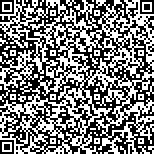| 引用本文: | 应翔,程韬,沈学谦,郑篮君,鲍晓娟,陈致宇.精神分裂症患者氨磺必利血药浓度与不良反应、泌乳素水平及认知功能相关性[J].中国现代应用药学,2022,39(11):1464-1469. |
| YING Xiang,CHENG Tao,SHEN Xueqian,ZHENG Lanjun,BAO Xiaojuan,CHEN Zhiyu.Correlation Between Amisulpride Blood Concentration and Adverse Reaction, Prolactin Level and Cognitive Function in Patients with Schizophrenia[J].Chin J Mod Appl Pharm(中国现代应用药学),2022,39(11):1464-1469. |
|
| |
|
|
| 本文已被:浏览 1601次 下载 831次 |

码上扫一扫! |
|
|
| 精神分裂症患者氨磺必利血药浓度与不良反应、泌乳素水平及认知功能相关性 |
|
应翔1, 程韬1, 沈学谦2, 郑篮君3, 鲍晓娟4, 陈致宇5
|
|
1.金华市第二医院, 精神科, 浙江 金华 321016;2.金华市第二医院, 科教科, 浙江 金华 321016;3.金华市食品药品检验检测研究院, 浙江 金华 321016;4.金华市第二医院, 纪检监察室, 浙江 金华 321016;5.杭州市第七人民医院老年科, 杭州 310008
|
|
| 摘要: |
| 目的 观察氨磺必利用于精神分裂症患者疗效以及其血药浓度与患者不良反应、泌乳素水平及认知功能相关性。方法 选择2019年7月—2020年6月80例经氨磺必利单药治疗精神分裂症患者,连续治疗8周,分别于治疗后1,2,4,8周末监测患者服药剂量、血药浓度、疗效[阳性和阴性症状量表(positive and negative symptom scale,PANSS)]及不良反应[治疗不良反应量表(treatment emergent symptom scale,TESS)];于治疗第8周末,检测患者血清泌乳素水平,测量认知功能水平变化[用韦氏成人记忆量表(wechsler memory scale-revised in China,WMS-RC)、威斯康星卡片分类测验(wisconsin card sorting test,WCST)],并分析血药浓度与服药剂量、疗效、不良反应、血清泌乳素、认知功能相关性。结果 Pearson相关分析法显示,治疗第1周末、第2周末、第4周末、第8周末的血药浓度与PANSS减分率、阳性症状减分率、阴性症状减分率、精神病理减分率、TESS评分均呈正相关(P<0.05)。治疗第8周末,男性、女性患者血清泌乳素均明显高于基线日(P<0.05),且女性患者氨磺必利血药浓度与血清泌乳素呈正相关(P<0.05)。治疗第8周末,患者WMS-RC测试中记忆商(memory quotient,MQ)明显较基线日升高(P<0.05),WCST测验中第一个分类所需应答数(number of responses required for the first classification,R1st)较基线日明显下降、完成分类数(completed classification,Cc)较基线日明显升高(P<0.05),但氨磺必利血药浓度与MQ、R1st、Cc均未发现明显相关性。结论 精神分裂症患者氨磺必利血药浓度与疗效、不良反应及女性患者泌乳素水平均表现出相关性,应对患者血药浓度进行监测,以进一步指导个体化用药。 |
| 关键词: 精神分裂症 氨磺必利 血药浓度 泌乳素 认知功能 不良反应 |
| DOI:10.13748/j.cnki.issn1007-7693.2022.11.011 |
| 分类号:R971 |
| 基金项目:浙江省医药卫生科技计划面上项目(2019KY516);金华市科学技术研究计划项目(2019-4-087) |
|
| Correlation Between Amisulpride Blood Concentration and Adverse Reaction, Prolactin Level and Cognitive Function in Patients with Schizophrenia |
|
YING Xiang1, CHENG Tao1, SHEN Xueqian2, ZHENG Lanjun3, BAO Xiaojuan4, CHEN Zhiyu5
|
|
1.The Second Hospital of Jinhua, Department of Psychiatry, Jinhua 321016, China;2.The Second Hospital of Jinhua, Department of Science and Education, Jinhua 321016, China;3.Jinhua Inspection and Testing Institute of Food and Drug Control, Jinhua 321016, China;4.The Second Hospital of Jinhua, Discipline Inspection and Supervision Office, Jinhua 321016, China;5.Department of Geriatrics, Hangzhou Seventh People's Hospital, Hangzhou 310008, China
|
| Abstract: |
| OBJECTIVE To observe the efficacy of amisulpride on patients with schizophrenia and the correlation between its blood concentration and adverse reaction, prolactin level and cognitive function. METHODS The 80 patients with schizophrenia who underwent amisulpride monotherapy were selected between July 2019 and June 2020 and were given continuous treatment for 8 weeks. At the end of 1 week, 2 weeks, 4 weeks and 8 weeks of treatment, the dosage of drug, blood concentration, efficacy[positive and negative symptom scale(PANSS)] and adverse reaction[treatment emergent symptom scale(TESS)] were monitored among the patients. At the end of 8 weeks of treatment, the level of serum prolactin was detected, and the cognitive function level[wechsler memory scale-revised in China(WMS-RC), wisconsin card sorting test(WCST)] was measured, and the correlation between blood concentration and drug dosage, efficacy, adverse reaction, serum prolactin and cognitive function was analyzed. RESULTS Pearson correlation analysis showed that the blood concentration was positively correlated with PANSS score reduction rate, positive symptom score reduction rate, negative symptom score reduction rate, psychopathology score reduction rate and TESS score at the end of week 1, weeks 2, weeks 4 and weeks 8 of treatment(P<0.05). At the end of weeks 8 of treatment, the level of serum prolactin of male patients and female patients was significantly higher than the baseline day (P<0.05), and the blood concentration of amisulpride in female patients was positively correlated with serum prolactin(P<0.05). At the end of weeks 8 of treatment, the memory quotient(MQ) of WMS-RC test was significantly higher than the baseline day (P<0.05), and the number of responses required for the first classification(R1st) of WCST test was significantly lower than the baseline day while the number of completed classification(Cc) was significantly higher than the baseline day(P<0.05), but the blood concentration of amisulpride was not significantly correlated with MQ, R1st and Cc. CONCLUSION The blood concentration of amisulpride in patients with schizophrenia is correlated with efficacy, adverse reaction and prolactin level in female patients. It is necessary to monitor the blood concentration of patients to further guide the individualized medication. |
| Key words: schizophrenia amisulpride blood concentration prolactin cognitive function adverse reaction |
|
|
|
|
